Just when the British were c onsidering snatching an FW 190 one was ‘delivered’ to them. Geoff Nutkins puts the surviving pieces into context.

Lone Wolf, a painting by the Author to depict the conflict between Obit Armin Faber and F/Sgt František Trejtnar. The Spitfire went down in flames, with the pilot baling out. Faber, dis-oriented, 'presented' the FW 190 to the RAF!
IN TIMES OF WAR the chances of the enemy giving you one of their latest aircraft to inspect are rare to say the least. However, one midsummer’s day in 1942 this seemed to be precisely the case, when a Focke-Wulf FW190A-3 arrived at Pembrey in South Wales.
It was June 23 and two Spitfires of 310 (Czech) Squadron piloted by P/O Střihavka and F/S Trejtnar were sent from Exeter to Bolt Head to join 312 (Czech) Squadron. They arrived at 17.20 hours and were ordered to readiness. At 19.08 they were both ordered to scramble, together with the remaining section of 312 Squadron.
P/O Střihavka, failed to take-off owing to his Spitfire being rammed by F/S Mareš before he had even moved. Luckily both pilots were uninjured.
F/S Trejtnar took-off with the remaining section of 312 Squadron. Across the Channel Obit Armin Faber, who was the Adjutant of the 7th Staffel of JG2 Richthofen was flying as last man with Egon Mayer’s Squadron. He had personally handed over the written order from Reichsmarschall Hermann Goering, which stated clearly that no Focke-Wulf fighter was to cross the Channel and must turn back to France upon reaching half-way.
The unit had been scrambled to intercept a force of 12 Bostons on their way to bomb Morlaix Aerodrome. These were escorted by the complete Czech Wing led by their C/O, W/C Vašátko.
On becoming airborne Faber discovered his radio was u/s, but the Spitfires were soon sighted and a wild fight ensued, during which W/C Vašátko’s fighter was seen to plummet into the ocean. He had been shot down by Uffz Wilhelm Reushling, but the German pilot’s elation was short-lived, for as he passed over his victim the Spitfire exploded, wrecking the Focke-Wulf. Reushling was lucky enough to take to his parachute, later to be picked-up by a launch, but Vašátko was not so fortunate. Later the next day a sea search was mounted for their C/O, but he was never found.
Suddenly, Faber found himself alone and, of course, remembering Göering’s order was looking for a French aerodrome on which to put down, when suddenly he saw the outline of a Spitfire on his tail. It was F/S František Trejtnar, and try as he may he could not shake off the determined Czech pilot.
Faber flew north of Exeter and had climbed to 19,000ft into the sun and, in a last desperate effort, performed an Immelmann turn, just as he had read in his World War One aircraft books and later learned at Fighter School. It worked, and in the head-on attack Trejtnar must have been blinded by the evening sun. Only one of the Focke-Wulf’s cannons was working. Both pilots fired simultaneously at about 600 yards range. Trejtnar saw his tracers dance all around the ‘190 with no strikes, but then there was a jolt as parts of his starboard wing flew off and a splinter hit him in the right arm. The Spitfire went into a spin and burst into flames, at about 5,000ft Trejtnar was able to pull himself out of the confines of his cockpit and pull his ripcord.
Faber circled the slowly descending airman 1½ times and saluted his adversary before flying off in a northward direction.
Below in the fields local farmhands were haymaking and had watched the fight going on high above them. Some had to duck under the hay carts as bullets hit the ground around them. When they saw the German flying around Trejtnar as he floated down, they thought he was going to be shot as they had heard all sorts of stories. Had Faber realised he was not over France he would not have wasted valuable fuel on such a chivalrous gesture!
The Czech airman landed heavily sustaining a simple fracture to his right leg. He was heard to say “the bastard got me!” Eager to help, the farmhands took a five-bar gate off its post and put Trejtnar on it to carry him to the nearby road. His Spitfire, 8L517, spun into the ground at the village of Blackdog and burnt out.
Meanwhile, Armin Faber had flown north instead of south and flew over the Bristol Channel. Thinking he was back in France he thought it quite in order to lower his undercarriage as he came in to land on what he thought was a French aerodrome. He performed a perfect victory roll which was all observed by Sgt Jeffreys, a duty pilot who could not believe his eyes!
Grabbing a Very pistol, he ran up to the German pilot. Faber just could not understand what was going on. Such was the shock that he spoke only French for two hours, until the fateful conclusion was reached that he had landed in error at Pembrey in South Wales.
This unintentional gift could not have been more timely. For on that very day a plan was to have been put forward to Combined Operations by Captain Philip Pinckney of E Troop, 12 Commando to actually steal one of Hitler’s new fighters from an airfield in France! The Focke-Wulf FW190 was regarded as the Luftwaffe’s best-ever fighter and it really had an edge on our aircraft in those days. Captain Pinckney’s plan was given serious consideration by his friend Jeffrey Quill whose job it would have been to fly the Butcher Bird back to England.
Armin Faber’s aircraft was repainted in RAF camouflage and given the serial MP499, making its maiden flight in the new colours on July 3, 1942 at RAE Farnborough. It was later evaluated at the Air Fighting Development Unit at Duxford.
Faber was shipped off to Canada and after two escape attempts he was repatriated just before the end of the war due to ill health.

The FW 190's partially refurbished front cockpit section and armoured screen. The control column is from another '190 and used for many years as a door handle!
The only known surviving relic, the Focke-Wulf’s front cockpit with armoured screen still bearing traces of the RAF paint applied to it during its evaluation can be seen at the Shoreham Aircraft Museum at Shoreham Village near Sevenoaks, Kent, along with many photographs and eyewitness accounts of this incident. In August 1991 the few remaining relics of Frantisek Trejtnar’s Spitfire were recovered by Graham Lewis and his team from the Crediton Museum Society who very kindly donated many relics for exhibition in our display at the Shoreham Aircraft Museum.
On September 21, 1991 Armin Faber visited the Museum and donated his Officer’s dagger and pilot’s badge for the display.
Inspired by this amazing story and to commemorate the 50th anniversary of the event, the Author has completed two paintings, Aces High and Lone Wolf which depict the air action of that day and a scene typical of many Luftwaffe airfields in France. Prints have been produced limited to 525, signed by Armin Faber, each with a certificate of authenticity.
Further details from AVI-ART

Faber's FW 190A-3 at Pembrey - still with all of its markings.
Reproduced from the June 1986 edition of Flypast with kind permission from the publishers, Key Publishing Ltd. www.flypast.com

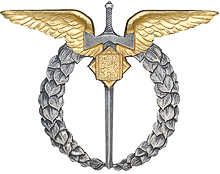




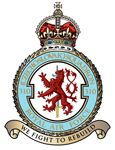
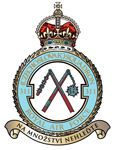
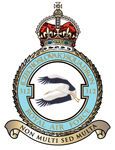
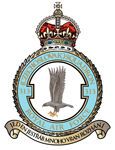


According to Captain Eric Brown’s “Wings of the Luftwaffe”, …”the fortuitous acquisition of one warplane probably saving the lives of countless RAF pilots. Thank God for Arnim Faber and Jon Maeckle, who landed a night fighter Ju-88G in England giving the allies the secrets of sophisticated German radars. It is unfortunate an ME-262 did not land in England.
Lovely story. However my father, who was actually on the pan as Faber circled Pembrey (he was an armourer returning to his section) ran to the twin-Lewis guns which constituted the airfield defence when he saw the FW bank on final approach, displaying the crosses. He was still running for the guns when he saw the a/c waggle its wings, the agreed signal for surrender, and lower its undercarriage.
At this point he turned away from the Lewis guns and ran to dispersal, arriving as Faber was being ushered towards the station commander’s car at gunpoint. He distinctly heard Faber say, in heavily accented English, “Hitler is mad, he must be stopped….he is sending Germany to ruin…”
My father, that evening, send the story to my mother in a letter which amazing passed the censor and has since become part of family history. My father was not one to ever make a story up, he was quite an exact, pedantic character. It is interesting that Faber was apparently repatriated under false pretences in 1944 – clearly his countrymen were not aware of the ‘mistakenly landed’ scenario.
If ever was an accepted story full of holes it must be this one – on a fine day, with an undamaged a/c, an experienced pilot who has just shot down two opponents mistakes north for south and thus lands his undamaged frame on an enemy airfield without making any attempt to immobilise it before he is taken prisoner.
This is instead, the story of an exceptionally brave man who did his best to thwart Hitler – and then went back to continue the fight. My hat off to him.
Most interesting story. Congrats
Although not recognized by him at the time, Armin Faber, Adjutant of the 7th Staffel of JG2 Richthofen, had to have been one of the luckiest FW-190 pilots of the war. I can’t imagine, though, his utter disgust at having landed at the wrong air field.
Wonderful story, wonderful webpage! Best Wishes!